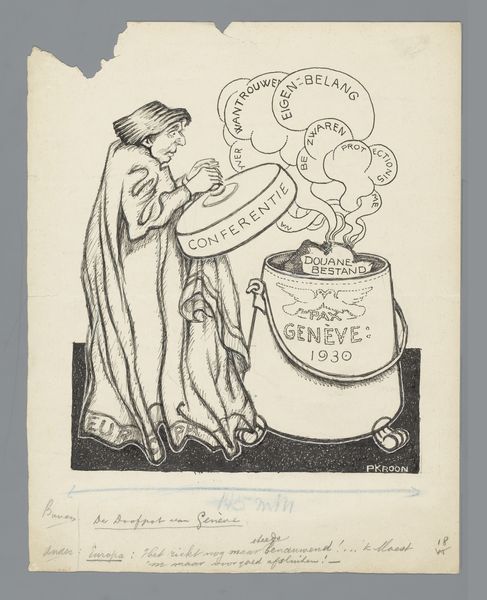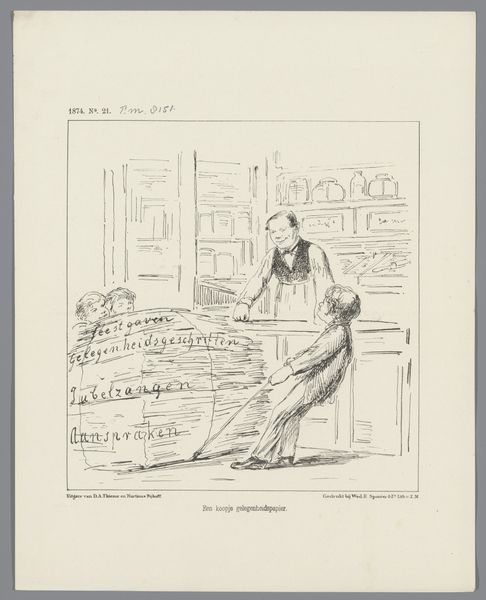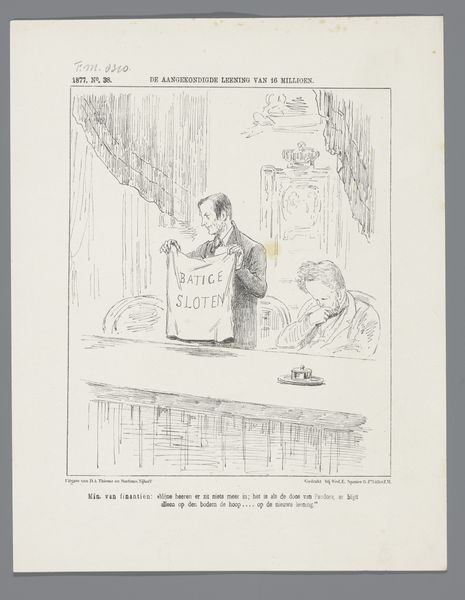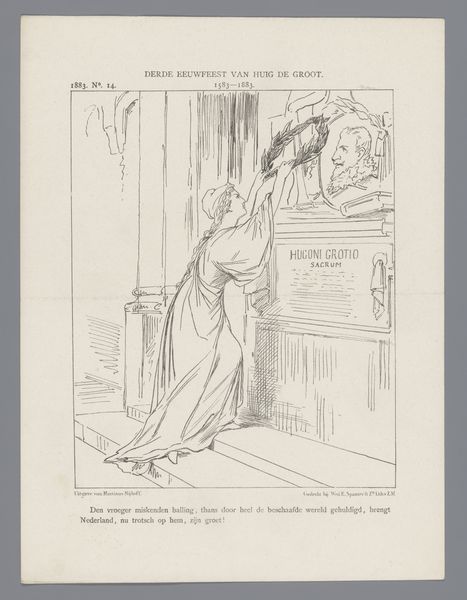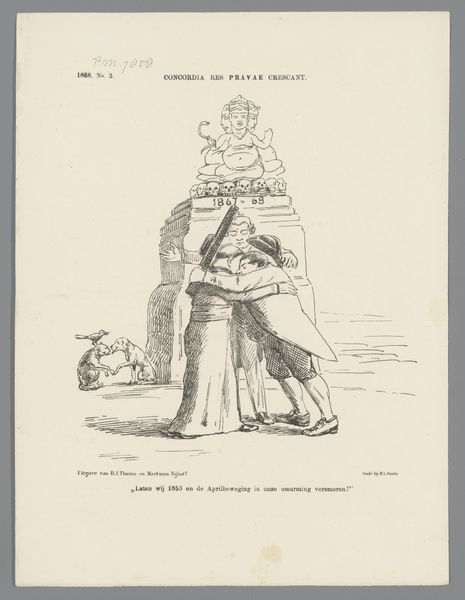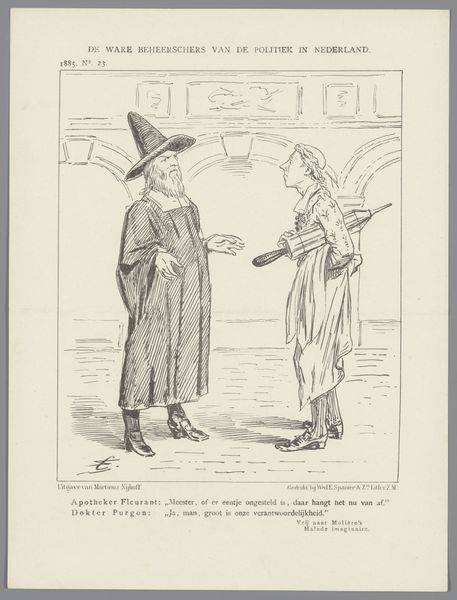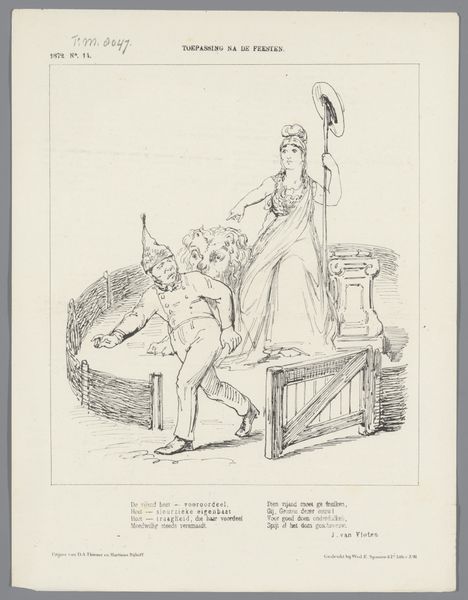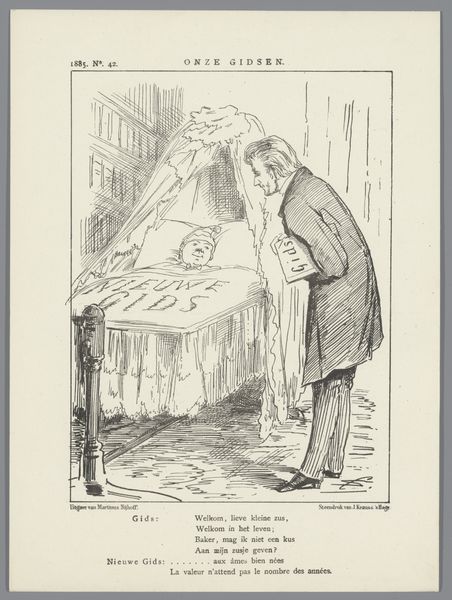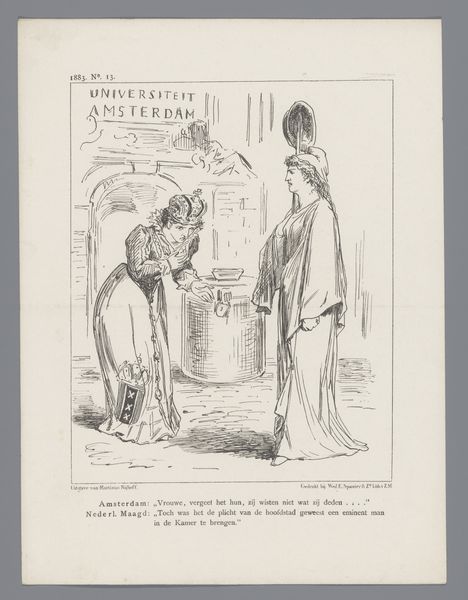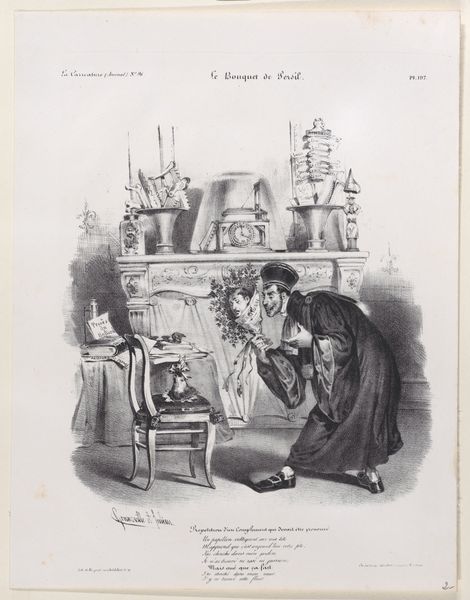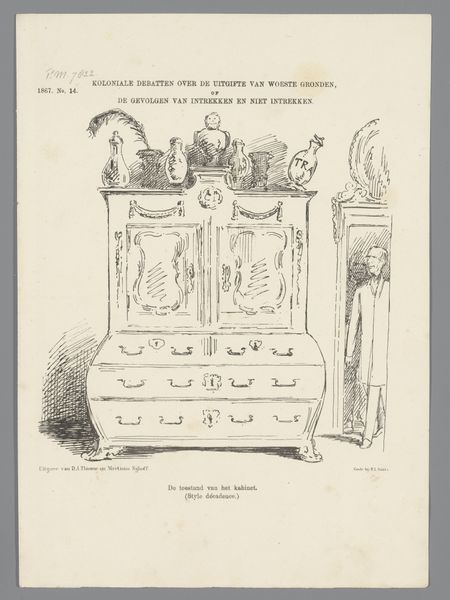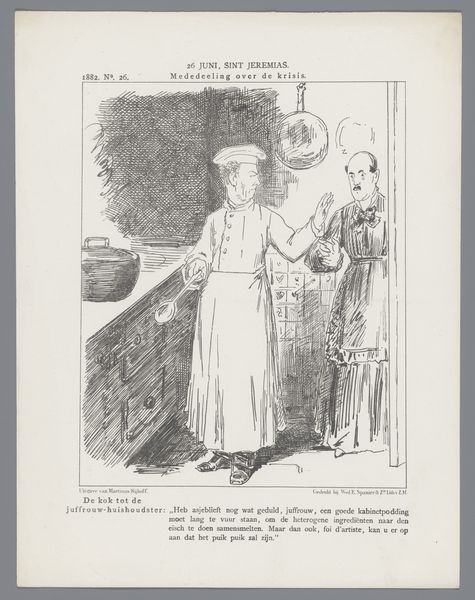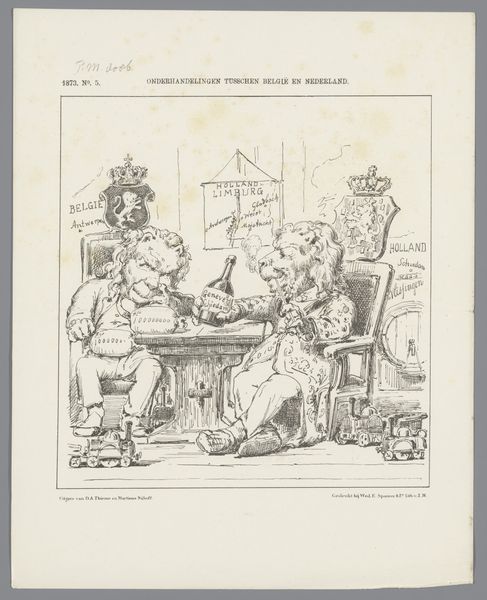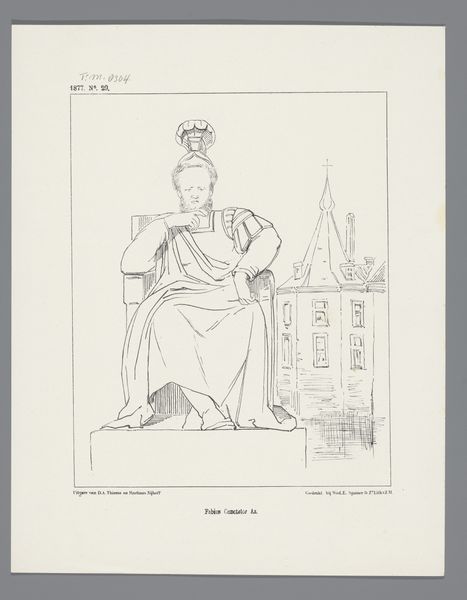
drawing, lithograph, print, paper, ink, pen
#
drawing
#
narrative-art
#
dutch-golden-age
#
lithograph
# print
#
caricature
#
paper
#
ink
#
pen
#
genre-painting
#
realism
Dimensions: height 275 mm, width 215 mm
Copyright: Rijks Museum: Open Domain
Curator: Today, we’re looking at a lithograph from 1886 by Johan Michaël Schmidt Crans. It's titled "Politieke spotprent met Sinterklaas," or "Political cartoon with Sinterklaas." Editor: My initial impression is one of stark political commentary. The monochrome print, the angular lines – it feels pointed, deliberately so. The sheer amount of objects crammed onto that table is overwhelming, like a chaotic bazaar of political issues. Curator: Indeed. Crans used the popular figure of Sinterklaas, a gift-giving saint, to satirize Dutch politics and policies of the time. Note how Sinterklaas is bestowing "gifts" that are actually pointed critiques. The style echoes the Dutch Golden Age, but with a sharp, contemporary edge aimed at public opinion. Editor: Precisely. Each of these so-called "gifts" seems tied to specific materials or labor concerns. For instance, the label for "the colonies" implies something far from a charitable gift, suggesting the exploitation of resources and labor in those territories. And what about the significance of using a lithograph for such a politically charged message? Curator: The lithographic process allowed for wider distribution of the image, making political critique accessible to a broader public. This image played a significant role in shaping public discourse on the issues of the day. The details mattered greatly –the choice of each "gift" represented particular policy shortcomings. Editor: Consider the very physical act of producing this print. The grinding of the lithographic stone, the repetitive printing, it speaks to the labour required to disseminate these political ideas. Also the materials: the paper, the ink – relatively cheap, accessible materials for spreading potent critiques. Curator: Absolutely. And the positioning of Sinterklaas, offering these 'gifts,' places the responsibility, and arguably blame, squarely on the ruling powers. Editor: It’s a powerful visualization of the intersection of culture, politics, and the everyday experience of late 19th-century Netherlands. Curator: Absolutely, examining this cartoon shows us that visual satire has always been a vital force in the history of politics. Editor: Looking at it through the lens of materiality really emphasizes that politics isn't some abstract realm; it's etched onto paper, printed with ink, and distributed into homes to fuel critical debate.
Comments
No comments
Be the first to comment and join the conversation on the ultimate creative platform.
